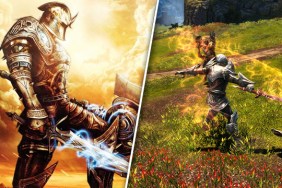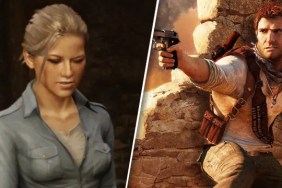"The 10 Most Influential Retro Games" is a feature series that will run daily for the next two weeks, between 12/3/12 to 12/14/12 on weekdays, with each day highlighting one of our ten picks in an unranked order. Follow our tagged page for Most Influential Retro Games to view the entire list.
So far, Game Revolution has featured Adventure, Tetris, Pong, Super Mario Bros., Metroid, Wolfenstein 3D, and Spacewar. ~Ed. Nick
Back in the late '70s, video games were better known for fights, races, thrilling space battles, and the like. They were games designed to be played one credit at a time and to offer both action and adrenaline, not necessarily their stories or their environments. Short fixes. Think of it like going out for a drink: The arcade experience is like taking a shot compared to enjoying a beer. And nowhere was it more obvious than back in 1979.
A group of friends wanted a more explorative adventure, so taking a page from Dungeons and Dragons, they brought the experience to the computer, starting with the massive PDP-1 in 1979 and branching out to home computers like the Amiga and Commodore in 1980. Their game was meant to take the role of a sort of dungeon master, setting the scene and letting players explore as they'd wish (up to a certain point, of course). Their end result was Zork, an early mass-marketed and popular "adventure" title in gaming history.
The play was regulated to the keyboard (unlike Atari's Adventure on the 2600), but detailed the scene in which players might find themselves. The opening scene was a short jaunt from a white house that provided the opening tools to take on the adventure, including the legendary—and always important—brass lantern. With commands as simple as "east" and "open mailbox," an adventurer could pick up items, interact with the environment, and even engage in battle. If a player wasn't careful, they might succumb to pitfalls littering the landscape by either enemies or the infamous "grue" (most players even know the quote by heart: "The room is pitch-black. You're likely to be eaten by a grue."), a darkness-dwelling monster that feasts on adventurers who forget they have a lantern
Zork was ported to mass-market computers and took off like a shot. And the company that produced them made all kinds of cash. The interface was as retro as could be—nothing more than a text line—and yet, players flocked to it. In the early days of gaming it was a novelty… a game less about graphics and reflex, instead relying on imagination and a true-blue virtual world. In the days of rudimentary visuals, the game offered more than any pixels on any platform could properly handle. And that made it unique, ushering in an entire genre known as "interactive fiction" (not to be confused with the "Choose Your Own Adventure" novels, which were much easier to cheat your way through).
From the humble beginnings and door-opening creation that was Zork, developers started weaving actual, self-evident stories into their games… there were even an official incarnation of The Hitchhiker's Guide to the Galaxy released by Infocom. Books were (sorta) cool again after the explorative and thoughtful depictions of areas in Zork, and while it's just as difficult to play through today as it was then, it still holds a special place in my heart as a way to explore new universes that look and feel life-life, but only exist the same way really good fiction was. The only difference is, I feel like I've had my hand in it, in some ways creating a more real experience that present-day graphics just can't do.
Just remember to keep your lantern on.







